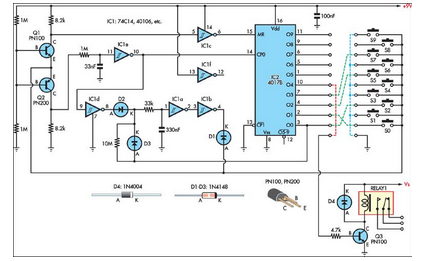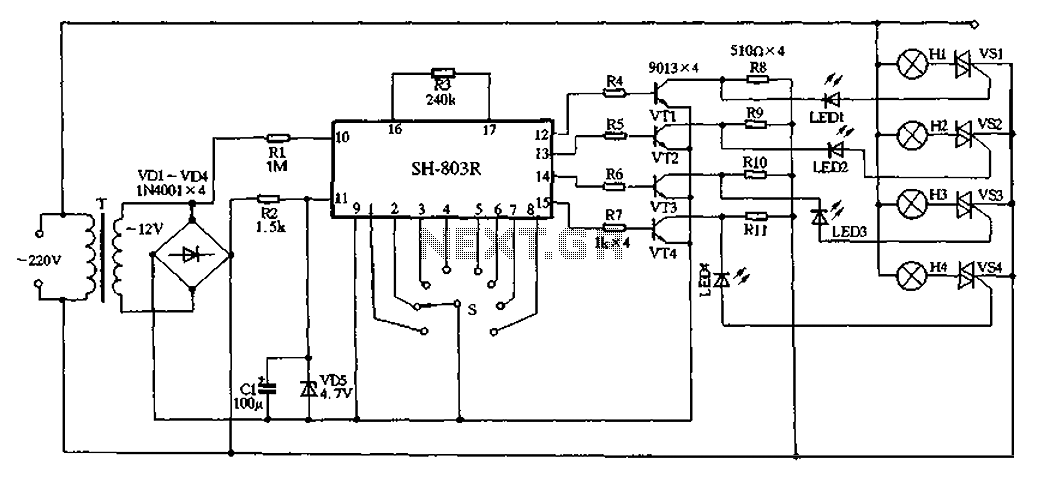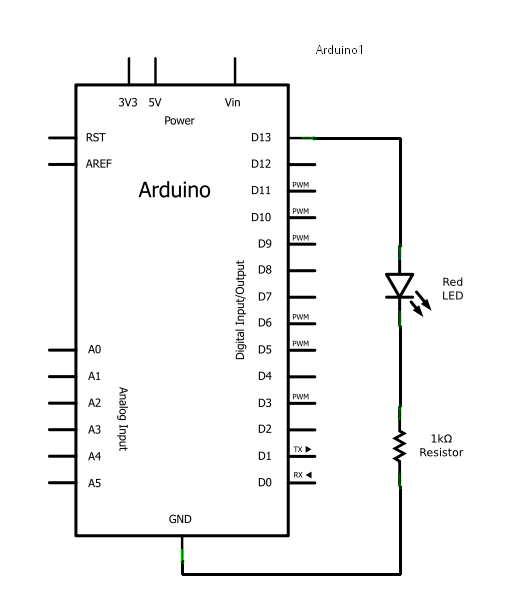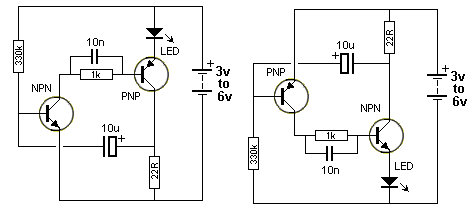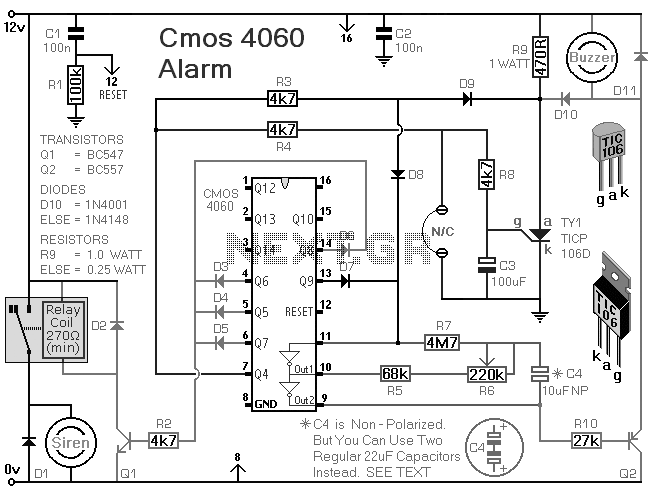
simple TRIAC Light Dimmer

This little circuit can be used to dim lights up to about 350 watts. It uses a simple, standard TRIAC circuit that, in my experience, generates very little heat. Please note that this circuit cannot be used with fluorescent lights. More: 1. This circuit is for 117VAC only. 220 or 240 V will burn up the circuit. L1 can be a maximum of 350 watts. 2. The circuit must be installed and used in a case.
The circuit described is a dimmer switch designed for resistive loads, such as incandescent light bulbs, with a maximum capacity of 350 watts at an AC voltage of 117V. The core component of the circuit is a TRIAC, which functions as a semiconductor device that can control the power delivered to the load by varying the phase angle of the AC waveform.
The TRIAC is typically triggered by a small control signal, which can be generated using a DIAC and a resistor-capacitor (RC) network. This setup allows the TRIAC to turn on at a specific point during the AC cycle, effectively reducing the average power delivered to the load and dimming the light. The design ensures that the TRIAC remains in the ON state for the remainder of the half-cycle until the current falls to zero, at which point it will turn off until the next triggering event.
It is crucial to ensure that the circuit operates within the specified voltage range of 117VAC. Exceeding this voltage, such as using 220 or 240V, can lead to catastrophic failure of the circuit components. The circuit should also be housed in an appropriate enclosure to prevent accidental contact with live parts and to provide adequate thermal management. The low heat generation of the TRIAC during operation is advantageous, as it reduces the need for extensive heat sinking.
In summary, this dimmer circuit is a straightforward and effective solution for controlling incandescent lighting, with specific limitations regarding voltage and load type. Proper installation in a protective case is essential for safe operation.This little circuit can be used to dim lights up to about 350 watts. It uses a simple, standard TRIAC circuit that, in my expirience, generates very little heat. Please note that this circuit cannot be used with fluorescent lights. 1. This circuit is for 117VAC only. 220 or 240 V will burn up the circuit. L1 can be a maximum of 350 watts. 2. The circuit must be installed and used in a case. 🔗 External reference
The circuit described is a dimmer switch designed for resistive loads, such as incandescent light bulbs, with a maximum capacity of 350 watts at an AC voltage of 117V. The core component of the circuit is a TRIAC, which functions as a semiconductor device that can control the power delivered to the load by varying the phase angle of the AC waveform.
The TRIAC is typically triggered by a small control signal, which can be generated using a DIAC and a resistor-capacitor (RC) network. This setup allows the TRIAC to turn on at a specific point during the AC cycle, effectively reducing the average power delivered to the load and dimming the light. The design ensures that the TRIAC remains in the ON state for the remainder of the half-cycle until the current falls to zero, at which point it will turn off until the next triggering event.
It is crucial to ensure that the circuit operates within the specified voltage range of 117VAC. Exceeding this voltage, such as using 220 or 240V, can lead to catastrophic failure of the circuit components. The circuit should also be housed in an appropriate enclosure to prevent accidental contact with live parts and to provide adequate thermal management. The low heat generation of the TRIAC during operation is advantageous, as it reduces the need for extensive heat sinking.
In summary, this dimmer circuit is a straightforward and effective solution for controlling incandescent lighting, with specific limitations regarding voltage and load type. Proper installation in a protective case is essential for safe operation.This little circuit can be used to dim lights up to about 350 watts. It uses a simple, standard TRIAC circuit that, in my expirience, generates very little heat. Please note that this circuit cannot be used with fluorescent lights. 1. This circuit is for 117VAC only. 220 or 240 V will burn up the circuit. L1 can be a maximum of 350 watts. 2. The circuit must be installed and used in a case. 🔗 External reference
Warning: include(partials/cookie-banner.php): Failed to open stream: Permission denied in /var/www/html/nextgr/view-circuit.php on line 713
Warning: include(): Failed opening 'partials/cookie-banner.php' for inclusion (include_path='.:/usr/share/php') in /var/www/html/nextgr/view-circuit.php on line 713
